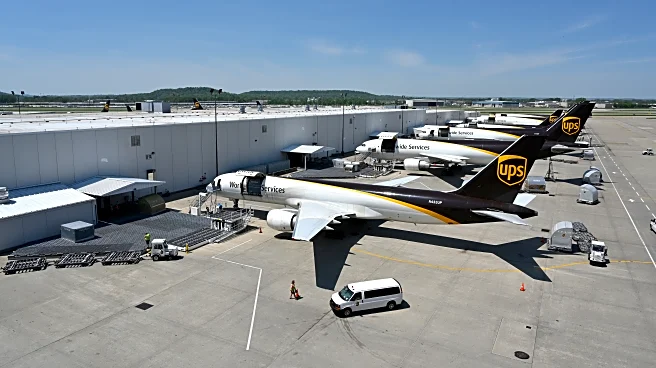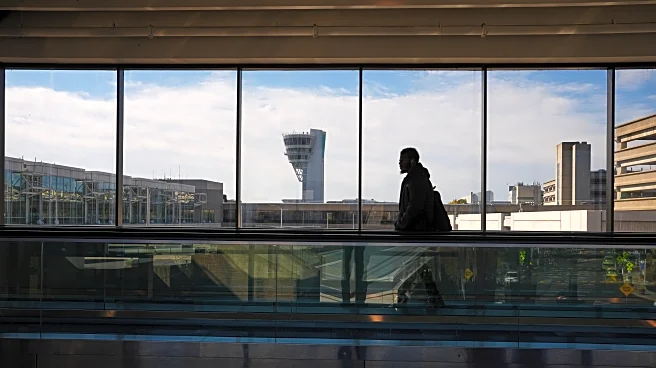What's Happening?
The Federal Aviation Administration (FAA) has announced a 10% reduction in flight capacity at 40 major U.S. airports, affecting air freight operations during the peak shipping season. This decision, driven
by absences among air traffic controllers due to an ongoing federal government shutdown, is expected to slow deliveries of high-value, time-sensitive goods such as pharmaceuticals and electronics. The cuts will impact major airports including JFK, LaGuardia, Newark, and Teterboro, as well as hubs in Atlanta, Chicago, Denver, and Los Angeles. Logistics companies warn that the reduction in capacity could lead to significant delays in the supply chain, as air freight relies heavily on the synchronized operation of the aviation ecosystem.
Why It's Important?
The reduction in flight capacity comes at a critical time for the logistics industry, which relies on air freight for the transportation of high-value and time-sensitive goods. The cuts could disrupt the supply chain, affecting industries such as automotive, aerospace, and pharmaceuticals. The slowdown in air freight capacity may lead to increased costs and delays for businesses that depend on timely deliveries. Additionally, the ongoing federal government shutdown exacerbates the situation, stretching federal employees thin and potentially prolonging the impact on air traffic control operations. The broader economic implications could include increased pressure on logistics companies and potential disruptions in manufacturing processes.
What's Next?
As the federal government shutdown continues, the FAA's flight capacity reductions are likely to persist, potentially leading to further disruptions in air freight operations. Logistics companies may need to explore alternative transportation methods or consolidate cargo flights to mitigate the impact. The National Air Traffic Controllers Association has indicated that recovery from the shutdown's effects on air traffic control could take weeks, suggesting prolonged challenges for the aviation and logistics sectors. Stakeholders in affected industries may need to adjust their supply chain strategies to accommodate potential delays and increased costs.












